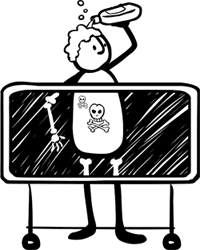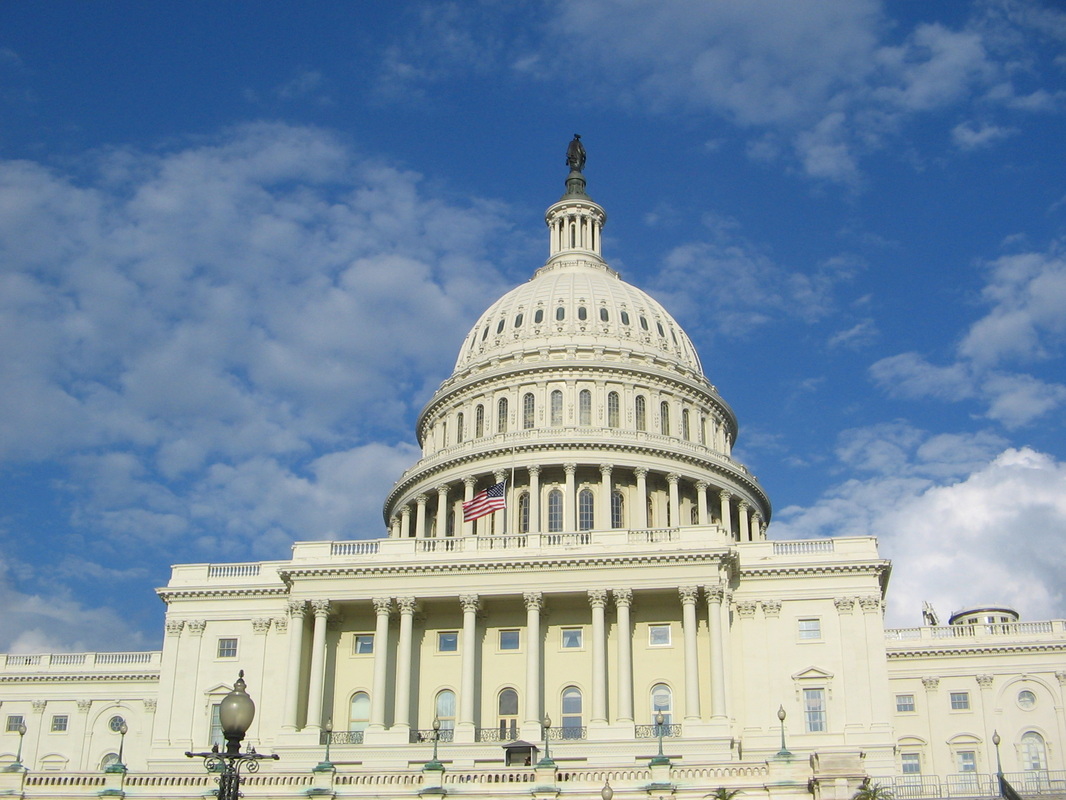Yayy for Election 2012!! Whether your candidate won or not, it’s hard to deny the feeling of empowerment that comes with voting! In California, there were some interesting Propositions on the ballot, and one in particular about labeling genetically modified foods (GMOs) reminded me of some challenges we still face in terms of consumer education. Specifically, I’m thinking about the Safe Cosmetics Act of 2011 (SCA2011).
As you’re reading this blog post, you may already know that when it comes to cosmetics regulation…the US is lacking. To put it nicely. My personal frustration with the status quo inspired me to write this more academic-like structured In Case You Missed It post (you can thank my policy analysis class for this one).
Below is this week’s In Case You Missed It – the history of cosmetics version!
As you’re reading this blog post, you may already know that when it comes to cosmetics regulation…the US is lacking. To put it nicely. My personal frustration with the status quo inspired me to write this more academic-like structured In Case You Missed It post (you can thank my policy analysis class for this one).
Below is this week’s In Case You Missed It – the history of cosmetics version!
Let’s get some historical perspective:
1848 – The first federal legislation to regulate drugs entering the US is passed: the Drug Importation Act.
1924 – Misleading statements on products labels are prohibited.
1938 – Cosmetics are regulated for the first time! Manufacturers must provide scientific proof of product safety through the Federal Food, Drug and Cosmetic Act.
1960 – Manufacturers have to ensure safety of colors in foods, drugs, and cosmetics: the Color Additive Amendment. Also, natural products based on botanical ingredients introduced.
1970 – Endangered species-related legislation bans certain cosmetics ingredients.
1976 – To review ingredient safety, an expert panel is formed. Results are publicly published in the International Journal of Toxicology.[1]
Did you notice that not a single piece of federal legislation after the 1938 Food, Drug, and Cosmetic Act actually regulates cosmetics specifically?! Despite so many advancements in technology, product ingredients, etc!!
Now, on to the present:
The Safe Cosmetics Act of 2011 was introduced in the House of Representatives in June 2011, and is currently bouncing around various subcommittees for further review. Basically, it increases regulations around cosmetics. In particular if this act passed, we’d see:
1. Improved product labeling.
2. Products screened against a reasonable certainty of no harm.
3. Prescribed manufacturing processes for cosmetics and ingredients.[2]
These three actions form a system that ideally screens out harmful and potentially carcinogenic substances, while keeping things affordable for small businesses. This bill should not be confused with the Safe Cosmetics Act of 2010…that bill was like the Beta version compared to 2011’s bill. The major arguments against the 2010 bill did not come from big cosmetic companies, which I would have thought, but actually from small to medium sized businesses who couldn’t afford the registration fees. The New and Improved SCA2011 listened to those complaints, and will eliminate fees for the smaller companies. [3]
In fact, SCA2011 goes beyond fee waivers to make the process easier for small businesses. With 1800 companies signed on to the Campaign for Safe Cosmetics, revisions to labeling, disclosure, and testing, SCA2011 is more of a collaboration than a battle. [4] Whether or not some concessions were made from the 2010 bill, passing SCA2011 would definitely be a step forward! It’s true value seems to be that it pretty much UPDATES the regulatory processes to match current technological capabilities. I mean, I’m sure the 1938 legislation did its job but it’s been 74 years…a lot’s happened. We have new chemicals, new manufacturing processes, new products – it makes sense to have new regulation.
Something that stood out to me about SCA2011 is that it requires companies to list the ingredients in “fragrance.” In my experience, “fragrance” can hide a multitude of potentially harmful ingredients like phthalates, parabens, or triclosan. Companies elect NOT to disclose those ingredients, claiming that the fragrance is a proprietary blend and therefore, a “trade secret.”[5]
1848 – The first federal legislation to regulate drugs entering the US is passed: the Drug Importation Act.
1924 – Misleading statements on products labels are prohibited.
1938 – Cosmetics are regulated for the first time! Manufacturers must provide scientific proof of product safety through the Federal Food, Drug and Cosmetic Act.
1960 – Manufacturers have to ensure safety of colors in foods, drugs, and cosmetics: the Color Additive Amendment. Also, natural products based on botanical ingredients introduced.
1970 – Endangered species-related legislation bans certain cosmetics ingredients.
1976 – To review ingredient safety, an expert panel is formed. Results are publicly published in the International Journal of Toxicology.[1]
Did you notice that not a single piece of federal legislation after the 1938 Food, Drug, and Cosmetic Act actually regulates cosmetics specifically?! Despite so many advancements in technology, product ingredients, etc!!
Now, on to the present:
The Safe Cosmetics Act of 2011 was introduced in the House of Representatives in June 2011, and is currently bouncing around various subcommittees for further review. Basically, it increases regulations around cosmetics. In particular if this act passed, we’d see:
1. Improved product labeling.
2. Products screened against a reasonable certainty of no harm.
3. Prescribed manufacturing processes for cosmetics and ingredients.[2]
These three actions form a system that ideally screens out harmful and potentially carcinogenic substances, while keeping things affordable for small businesses. This bill should not be confused with the Safe Cosmetics Act of 2010…that bill was like the Beta version compared to 2011’s bill. The major arguments against the 2010 bill did not come from big cosmetic companies, which I would have thought, but actually from small to medium sized businesses who couldn’t afford the registration fees. The New and Improved SCA2011 listened to those complaints, and will eliminate fees for the smaller companies. [3]
In fact, SCA2011 goes beyond fee waivers to make the process easier for small businesses. With 1800 companies signed on to the Campaign for Safe Cosmetics, revisions to labeling, disclosure, and testing, SCA2011 is more of a collaboration than a battle. [4] Whether or not some concessions were made from the 2010 bill, passing SCA2011 would definitely be a step forward! It’s true value seems to be that it pretty much UPDATES the regulatory processes to match current technological capabilities. I mean, I’m sure the 1938 legislation did its job but it’s been 74 years…a lot’s happened. We have new chemicals, new manufacturing processes, new products – it makes sense to have new regulation.
Something that stood out to me about SCA2011 is that it requires companies to list the ingredients in “fragrance.” In my experience, “fragrance” can hide a multitude of potentially harmful ingredients like phthalates, parabens, or triclosan. Companies elect NOT to disclose those ingredients, claiming that the fragrance is a proprietary blend and therefore, a “trade secret.”[5]

What’s most disturbing to me is when I’m able to push through the marketing of a product, and really scrutinize the ingredients and the company’s mission – I realize the true danger I put MYSELF in on a daily basis! It’s overwhelming in the skin care or makeup aisle…with dozens of brands fighting for my attention, I can spend an HOUR in the store and still walk out empty-handed. Personally, I feel that the government could do so much more to protect me, the consumer, by simply phasing out known carcinogens and hormone-disrupting chemicals from products that I use on a daily basis.
If you are interested in reading more about cosmetics regulation, or want to follow the Safe Cosmetics Act of 2011 as it moves (hopefully) forward, see the references section for some great resources.
References:
[1] http://www.safecosmeticsalliance.org/index.cfm?objectid=EE203500-D4DB-11E1-A38E000C296BA163
[2] http://thomas.loc.gov/cgi-bin/bdquery/z?d112:h.r.2359:
[3] http://safecosmetics.org/article.php?id=695
[4] http://www.forbes.com/sites/amywestervelt/2011/06/27/new-and-improved-safe-cosmetics-act-could-boost-green-chemistry/
[5] http://www.ewg.org/files/nottoopretty_final.pdf
If you are interested in reading more about cosmetics regulation, or want to follow the Safe Cosmetics Act of 2011 as it moves (hopefully) forward, see the references section for some great resources.
References:
[1] http://www.safecosmeticsalliance.org/index.cfm?objectid=EE203500-D4DB-11E1-A38E000C296BA163
[2] http://thomas.loc.gov/cgi-bin/bdquery/z?d112:h.r.2359:
[3] http://safecosmetics.org/article.php?id=695
[4] http://www.forbes.com/sites/amywestervelt/2011/06/27/new-and-improved-safe-cosmetics-act-could-boost-green-chemistry/
[5] http://www.ewg.org/files/nottoopretty_final.pdf

 RSS Feed
RSS Feed